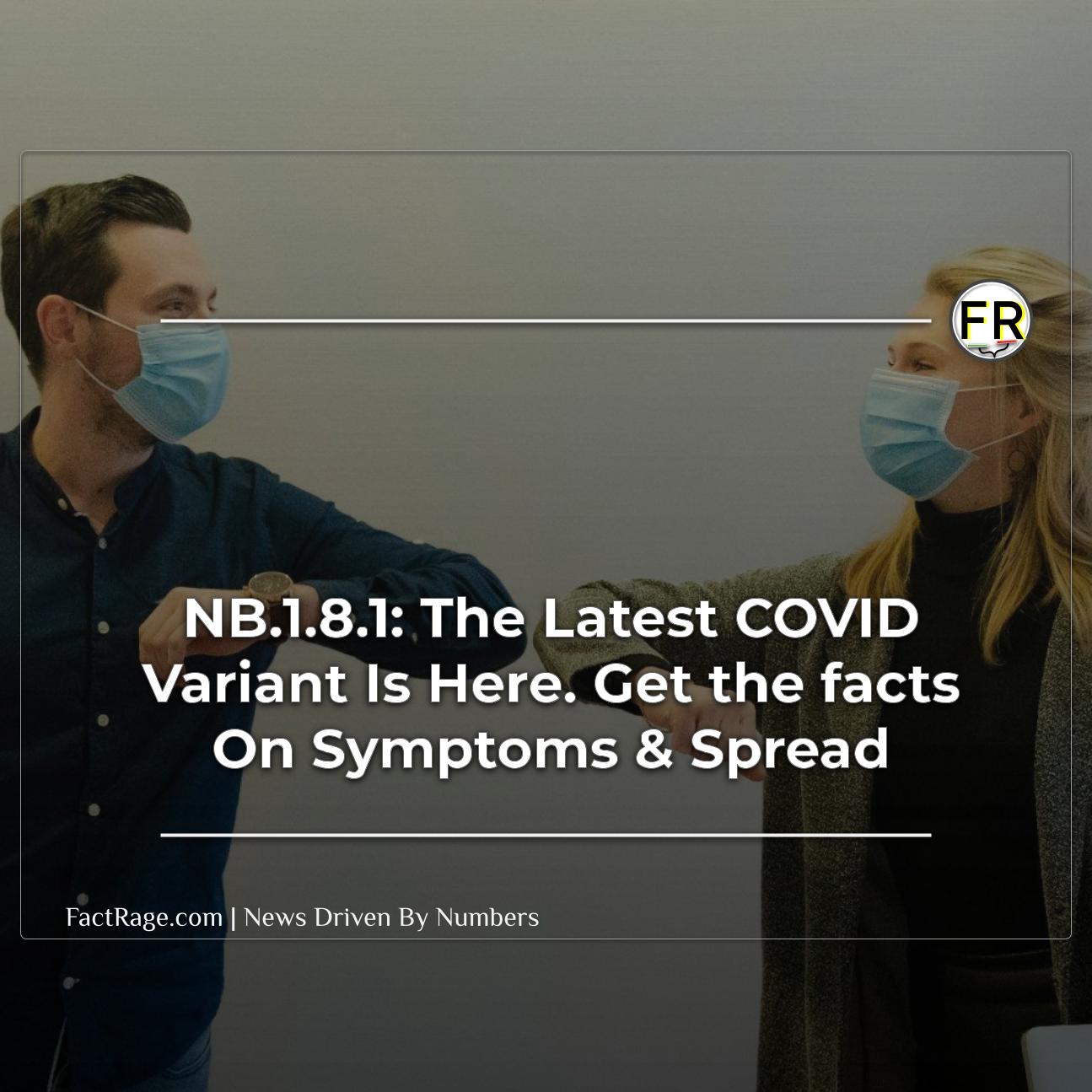GLOBAL – A new COVID-19 variant, NB.1.8.1, is currently under monitoring by the World Health Organization (WHO) as it shows signs of increasing prevalence in various regions globally. This new sub-lineage of the Omicron variant is drawing attention due to its apparent growth advantage and widespread detection.
Key Facts:
- Emergence and Spread: The NB.1.8.1 variant, a descendant of the Omicron JN.1 lineage, was first identified in January and has since seen a rapid increase in cases, notably becoming dominant in China and detected in numerous countries including the United States.
- Transmissibility and Severity: Preliminary data suggests NB.1.8.1 is more transmissible than previous variants, potentially due to enhanced binding to human cells. However, current information indicates it does not cause more severe illness compared to other circulating strains.
- Vaccine Efficacy: While NB.1.8.1 exhibits some degree of immune evasion, existing immunity from vaccinations or prior infections is still expected to offer protection against severe disease.
The emergence of NB.1.8.1 underscores the ongoing evolution of the SARS-CoV-2 virus, prompting health authorities to continue surveillance and public health messaging.
What is NB.1.8.1 and Where Is It Spreading?

NB.1.8.1 is the latest sub-lineage of the Omicron variant of SARS-CoV-2, the virus that causes COVID-19. It was first identified in January and has since gained a significant foothold, particularly in China, where it is now the dominant strain. Globally, the variant has been reported in at least 22 countries, including increasing detections in the Region of the Americas, Western Pacific, and European regions. In the United States, cases have been confirmed in several states, including California, Hawaii, New York, Ohio, Rhode Island, Virginia, and Washington, often detected in international travelers.
How does a new variant emerge and become prevalent? The virus continuously mutates, and some mutations can provide an advantage, such as increased transmissibility or the ability to evade existing immunity. NB.1.8.1’s rapid growth indicates it possesses such advantages, allowing it to outcompete other circulating strains.
Are Symptoms Different and How Severe is NB.1.8.1?
The symptoms associated with the NB.1.8.1 variant are broadly similar to those seen with other Omicron strains. Common symptoms include cough, sore throat, runny nose, sneezing, fatigue, headache, muscle aches, congestion, fever or chills, and occasionally nausea, vomiting, or diarrhea. While the loss of taste and smell was a hallmark of earlier COVID-19 variants, it is less frequently reported with NB.1.8.1. Some anecdotal reports suggest a new common symptom might be hoarseness or a hoarse voice.
A key concern with any new variant is its potential to cause more severe illness. The WHO, citing data from countries with increasing NB.1.8.1 numbers, states that there are no reports to suggest that the associated disease severity is higher compared to other circulating variants. Hospitalizations have increased in some regions where NB.1.8.1 is surging, but this appears to be tied to a higher number of overall infections rather than an increased severity per case. Most infections remain mild, especially in vaccinated individuals. However, vulnerable populations, such as older adults or those with compromised immune systems, remain at higher risk for more severe outcomes.
How Effective Are Current Vaccines Against NB.1.8.1?

The ongoing evolution of the virus raises questions about the continued effectiveness of existing vaccines. NB.1.8.1, like other Omicron sub-variants, exhibits some degree of immune evasion, meaning it may partially bypass protection from previous infections or vaccinations. However, public health officials and vaccine manufacturers emphasize that current COVID-19 vaccines are still expected to provide strong protection against severe illness, hospitalization, and death caused by NB.1.8.1.
Vaccine companies such as Pfizer and Moderna are actively developing updated vaccines that target the JN.1 lineage, which is the parent lineage of NB.1.8.1. Early data suggests that these updated formulations could offer enhanced protection against NB.1.8.1 and other currently circulating variants. Health authorities continue to recommend staying up-to-date with vaccinations and boosters, especially for at-risk individuals. The FDA’s vaccine advisory committee recently recommended that future COVID-19 vaccines target the JN.1 strain, or preferably the LP.8.1 strain, which is a descendant of JN.1. This strategy aims to ensure vaccines remain effective against evolving variants.











